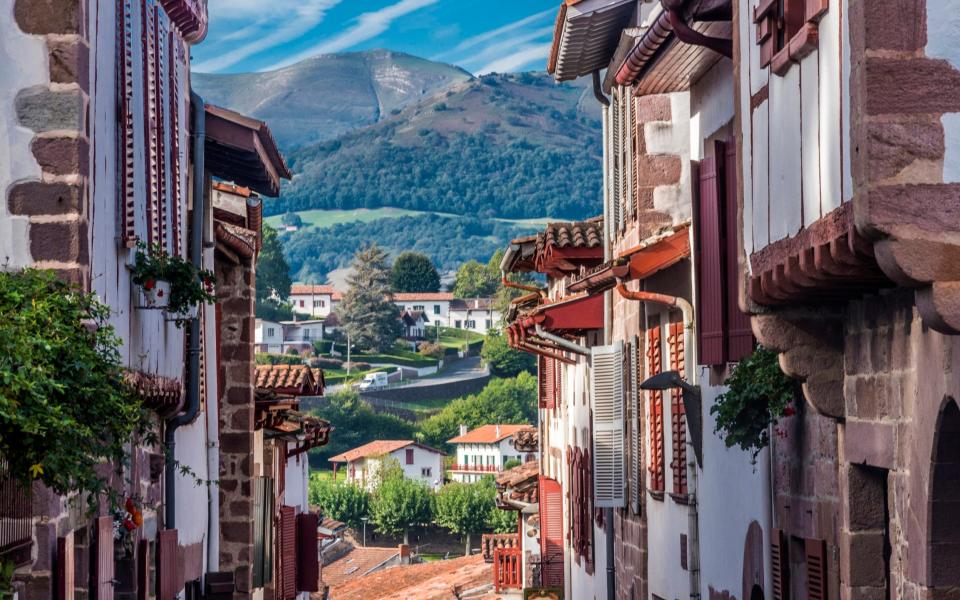France’s 20 greatest villages, ranked and rated
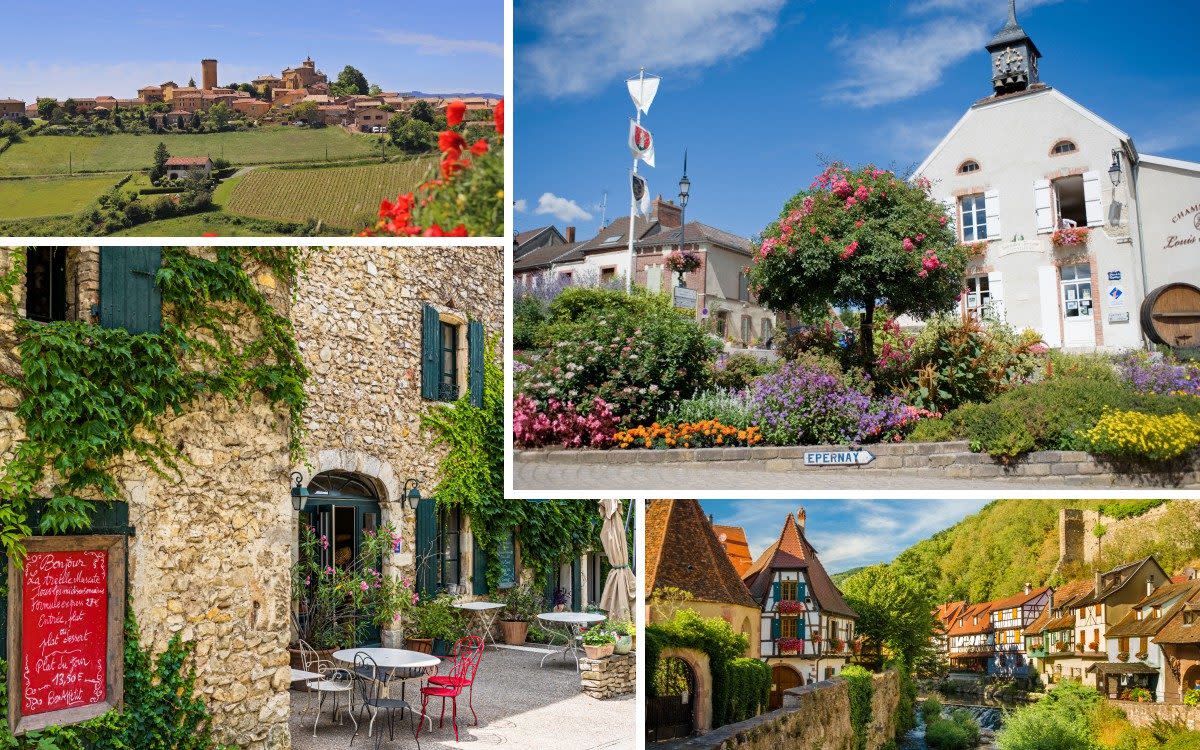
The summer holidays are rolling around. Some people will be going to France and seeking out French villages – the ones fabled for markets, bars, boulangeries and a sense of communal purpose we sometimes think we’ve lost in Britain. But which villages? I’ve compiled a list of my top 20 – counting down to my favourite.
In a sense, the selection is nonsensical: there are so many variables, and some 36,000 French communes to choose among. But it’s quite fun, and not to be taken too seriously. I’ve tried to avoid too many of the blindingly obvious (La Roque Gageac, Mont Saint Michel) in favour of those with substance and maybe a story to tell, and attempted (in most instances) to pick the quietest offerings with a population below 3,000. They are, in short, the French villages that I get most excited about returning to.
20. Les Rousses, Jura
Population: 3,663
Some 3,700 feet up in the Jura, Les Rousses is where the inside exists mainly to send you outside: skiing, biking, hiking, riding, zip-wiring and being overcome by the ambient mountain grandeur. Like Skegness, it is so bracing. When all that pales, there’s golf, an adventure park, or commando games in France’s second-biggest fortress. The fort faces the Swiss, who don’t attack much these days, so it’s of most use for the games, or maturing 140,000 wheels of local Comté cheese in the cellars. The smell down there is ample to keep any rogue Swiss at bay. You might meet normal Swiss nearby at the Arbézie hotel. The bar, stairs and bedrooms are bisected by the Franco-Swiss frontier. Last time I visited, I drank my first beer in France, my second further along the bar in Switzerland.
Where to stay: The Manoir des Montagnes (manoirdesmontagnes.com) has double rooms from £129.

19. Trôo, Loir Valley
Population: 269
To be clear: this is the Loir valley (no ‘e’), running parallel to, and north of, the grander Loire valley, and it is all the better for it. The valley rolls to rhythms ditched in mainstream France long ago, by hills, woods and farmland, vineyards and villages, where traffic lights remain a talking point. At Trôo, chalk cliffs edge the river and over a couple of millennia, locals have dug into the rockface to take refuge and make their homes. The result is an extraordinary vertical village punched into the rock-face on four levels, linked by steps. The preserved Yuccas Cave was home to the labouring Didé family and six kids until 1965. Though in a cave, the rooms were just so. Do visit. Cave-dwelling is now trendy, so other homes are given over to arty folk, yet the whole remains remarkable.
Where to stay: Martial Chevallier’s lovely chambres-d’hôtes (moulindelaplaine.com) has double rooms from £86, including breakfast.
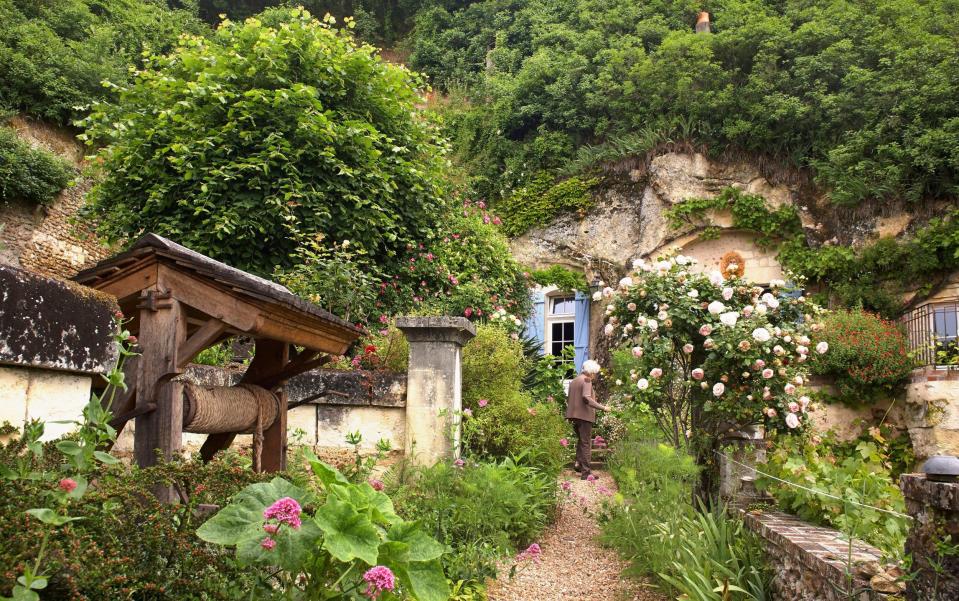
18. Cliousclat, Rhône Valley
Population: 597
Pre-motorway, holidaymakers swung south to the Mediterranean on the Route Nationale 7 (you may hum the Charles Trenet ditty). The RN7 remains a good idea, travelling through a France with memories of the 1950s, in and out of villages you’ve never heard of. South of Valence, Cliousclat is a cracker. You turn into the little hills, towards the woods and there it is, on a mound between orchard and fields in sinuous stone-built serenity. It’s known for pottery but that needn’t detain you. Weather-worn peace and prettiness suffice.
Where to stay: Le Treille Muscate (hotelrestaurant-latreillemuscate.com) has double rooms from £82.
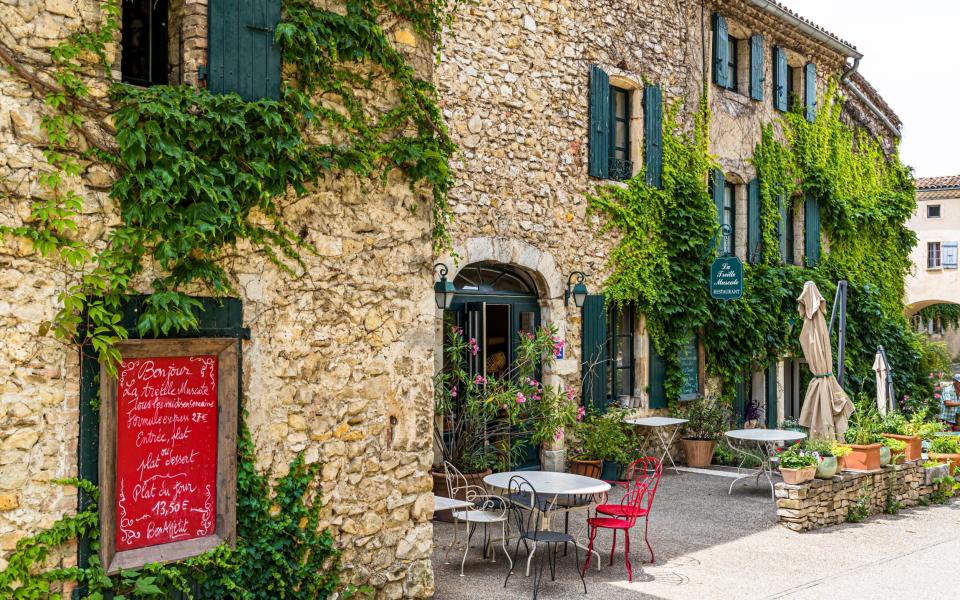
17. Rieutort de Randon, Lozère, Occitanie
Population: 787
Villages apparently grow organically from the granite uplands (rocks, forest, rolling pasture-land) of the Lozerien Margeride. Rambling or driving through the remoteness, you’ll seek a spot with a few facilities. Roll into Rieutort, a centre of rural life with cafés, shops, loads of farmers and a sense of sufficiency – plus a church where I once attended a wedding during which the priest wore wellies, for he was gardening later. I can vouch for that. It was my wedding. Back then, in the most profound bit of la France profonde, few had ever seen an Englishman, let alone an English bridegroom. But that was then. Now people say hello, and the surroundings are as uplifting as the Scottish Highlands.
Where to stay: Hotel O’Mineola (hotel-omineola.fr) has double rooms from £51.
16. Saulieu, Burgundy
Population: 2,283
The main reason for coming here is to celebrate François Pompon, creator of the Polar Bear, the greatest of all animal sculptures. He was born in Saulieu in 1855, went on to work with Rodin, and finally found fame with the bear in his 68th year. The original sculpture is in the Musée d’Orsay in Paris, but there’s a great copy guarding the main drag through Saulieu, plus other fine works in the village’s small but splendid Musée François Pompon. The second reason is gastronomic: halfway between Paris and Lyon, Saulieu has been a foodie stop-over for centuries. It still is, with the terrifyingly expensive Côte-d’Or at its heart. Thirdly, it’s a grittily disarming gateway to the Morvan granite uplands, the wildest bit of Burgundy. The place, in short, has pretty much everything.
Where to stay: The Tour d’Auxois (bernard-loiseau.com) has double rooms from £98.
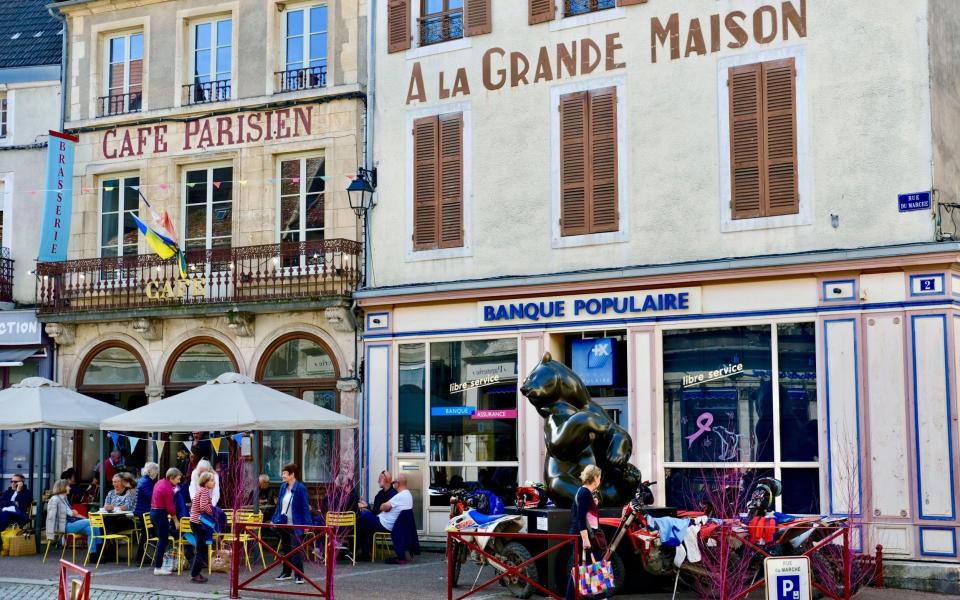
15. Fources, Gers, Gascony
Population: 257
This is Armagnac country. The key outlet under the arcades of Fources’ central square (which is round) is the family Armagnac shop run by Manon Ladevedèze. She is a lovely woman of strong views; she will not sell to you if she suspects you intend to use her Armagnac for cocktails (“No!”) and will occasionally have a nip herself at 10am with friends. Fources is, in short, of forceful character – like all medieval bastide villages, it is the perfect setting for the hum of country life. Established by both the French and English to fix the rural population, making them easier to tax and defend, bastides like Fources retain a sense of sunlit certainties redolent of simpler times. It has the flowers, the market, an auberge where £15 buys a rattlingly good three-course lunch, and denizens whose Gascon accents you can cut with a knife, like saucisson.
Where to stay: Château de Fources chambres-d’hôtes (chateaudefources.com) has double rooms from £138, including breakfast.
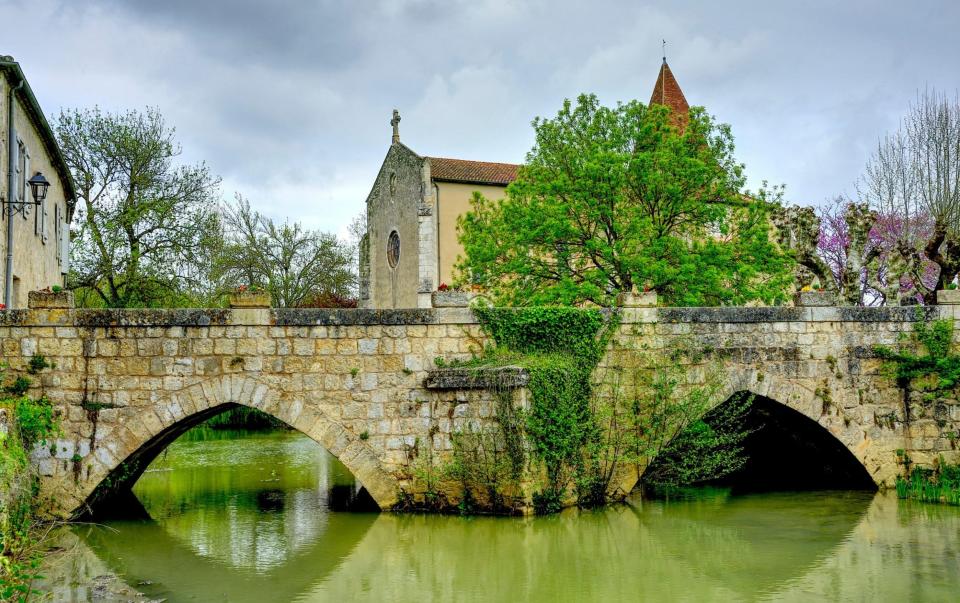
14. Rochefort-en-Terre, Brittany
Population: 635
Among previous inhabitants of Rochefort (near Vannes) was turn-of-the-20th-century Naia – a witch and a ventriloquist apparently possessing the power of ubiquity. She wasn’t entirely legendary. There are photos of her in the Musée Naia, though whether any depict her in different places simultaneously is unclear. We must also mention Alfred Partridge Klots, a US painter who restored the village château to Gothic and Renaissance glory. It’s easy to see why Klots was seduced. The stone structure of the village had (and has) hardly evolved in centuries. It’s so pristinely preserved that it seems almost unreal. Almost. Rural squalor has been replaced by geraniums, buttresses stop the church sliding down hill and the Café Breton, serving since 1818, is among the oldest bistros in Europe. It’s nicely adorned with Klots paintings.
Where to stay: Auberge Saint Hernin (auberge-sainthernin.fr) has double rooms from £71.

13. Abjat-sur-Bandiat, Dordogne
Population: 620
Of the many admirable villages in the Dordogne only Abjat, off the beaten track in the north of the county, can assure you a game of conkers. Unknown in France, the crack of conkers arrived in Abjat with a couple from Northants who took over the village bar, renaming it the Entente Cordiale. Abjat is now the headquarters of the French Conkers Federation and hosts the annual National Conkers Championship (this year, October 7). “It started off barmy,” says Stewart Edwards, the Northants man in question. “It remains barmy, but on a bigger scale.” To get conkering, head for the bar. That done, roam a much-beflowered and rather lovely village before exploring the deep green and watery surrounds.
Where to stay: l’Auberge gites and B&B (aubergeabjat.com) has double rooms from £60, including breakfast.
12. Sancerre, Loire Valley
Population: 1,292
Obviously, there’s the wine – the sauvignon blanc against which all other sauvignon blancs are measured and found a little too florid. But the wine has a home, and its home is here, in a Loire valley hilltopper, a medieval warren of streets steep, sinuous and narrow. Driving through at speed counts as culling. There’s been blood before, mind, when a 1573 Catholic siege reduced defending Protestants to eating cats, rats and crushed slate. The diet has improved since, with the wine but also the Crottin de Chavignol goats’ milk cheeses and other elements of Loire valley cooking. To get the best of a Sancerre white, I’d go for a salmon steak in a beurre blanc sauce.
Where to stay: La Côte des Monts Damnés (hotel-restaurant-chavignol.fr) has double rooms from £69.
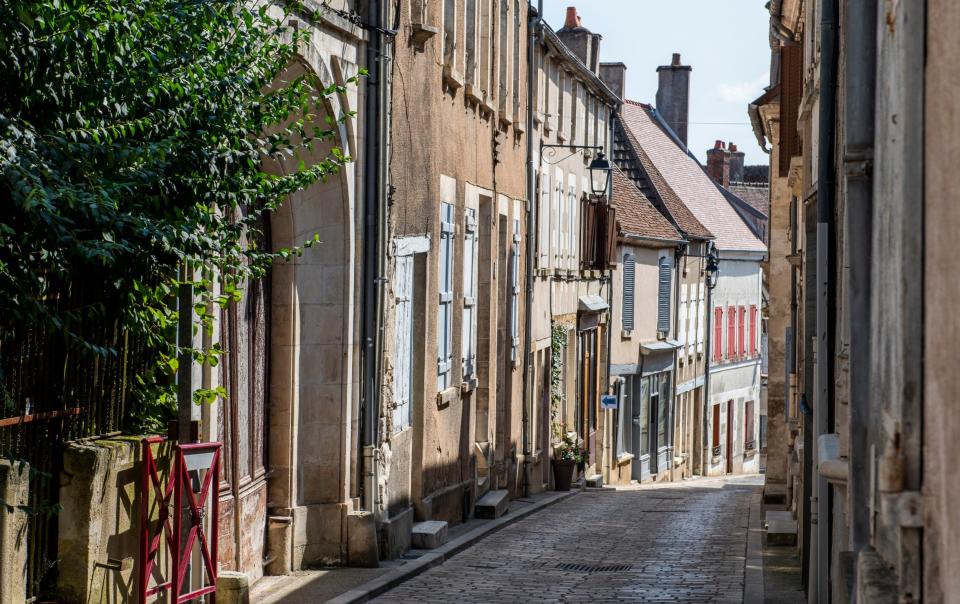
11. Oingt, Beaujolais
Population: 680
The almost-musical sound you hear on approaching Oingt – through vines, up the hill – will be that of the Barbary organ. They’re keen on Barbaries here. There’s a festival on September 2 and 3 and at other times, the sound may seep out from the Museum of Mechanical Music. In truth, they’re full of ideas in this outstandingly preserved walled village overseeing the ruffled Beaujolais landscape. Cobbled streets snake up the slopes forming an age-old conspiracy in which all can join. Gold stones glow red at sunset. If this were Tuscany, it would be standing room only. But it’s not. It’s Beaujolais, and kept ship-shape by volunteers. Come December, they’re the moving force behind a Christmas festival covering the village in 200 nativity scenes; in recent years, one person made his from tea bags, another used vinyl 45s.
Where to stay: Le Clos des Fayettes maison-d’hôtes (leclosdesfayettes.fr) has doubles from £155, including breakfast.
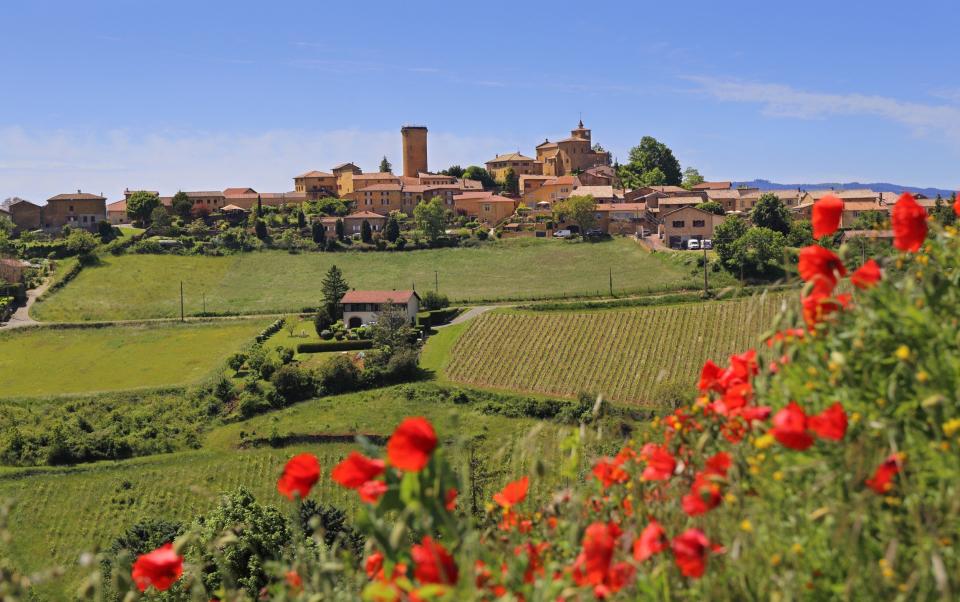
10. Beaumont-du-Périgord, Dordogne
Population: 1,755
Built to a chequer-board pattern under our Edward I – in the 13th-century halcyon days when the English ran half of France – Beaumont is, like other bastide villages, as satisfactory for contemporary affairs as it was back then. Country life flows in from the surrounding area by tractor, bike and car to talk rugby or foie gras at cafés under the arcades of the central square. Or to go to Mass at the fortified English Gothic church. Or to stock up chez Bariat, the sort of hardware shop which died out elsewhere when your grandma was a girl. It sells everything, from nails through grapefruit spoons, boot scrapers to mole traps and .22 rifles. Nearby, Australian Prudence Kilgour has the most seductive little perfume business in France. Beaumont, in short, is riveting.
Where to stay: Auberge Lou Peyrol (hotel-loupeyrol-dordogne.com) has double rooms from £62.

9. Hautvillers, Champagne
Population: 628
“My only regret,” said the ageing Maynard Keynes, “is that I haven’t drunk enough champagne.” It’s not a risk worth taking, so travel to the region. The big posh houses gather in Reims and Epernay – but the heart of the matter is out in the villages where family operations create independent champagnes in cellars dug out by great grandad with a pick-axe. Prettiest of all is Hautvillers, base to 17th-century monk Dom Pérignon. He didn’t (as claimed) invent champagne, but certainly improved it. Stroll to his tomb in the village church along sunny white-stone streets hung with wrought-iron signs. Then stroll back to Champagne G.Tribaut whose vines sweep down to the river Marne with Renaissance rightness. Valérie Tribaut is as welcoming as her champagnes are good value.
Where to stay: La Chevalée chambres-d’hôtes with the Fedyk champagne-making family (champagne-fedyk-chambres-hotes-hautvillers.com) has double rooms from £138, including breakfast.

8. Bagnoles-de-l’Orne, Normandy
Population: 2,730
We choose Bagnoles not because it’s a celebrated spa town (though it is: Roumanian royalty were regulars). No. It’s for the associated, raffishly elegant Belle Epoque aspect which all self-respecting spa towns wear. This is Leamington with its hat at a more rakish angle. Built round a lake as big as the village, Bagnoles is more garden than town, and more forest than either. It’s edged by 18,000 acres of beech, oak, spruce, rocks and much else besides. As I do, US billionaire Frank Jay Gould thought the place delightful. He invested much of his crooked dad’s railway fortune in a casino and Grand Hotel. He expected gratitude, didn’t get it, so cleared off to establish Juan-les-Pins on the Riviera. Bagnoles has, though, got on pretty well without him, a seam of Edwardian charm running through to right now.
Where to stay: Hotel Beryl (hotel-bagnoles.com) has double rooms from £73.

7. Barcelonnette, Ubaye Valley, Alps
Population: 2,492
Barcelonnette is so purely Alpine – mountains, surging river, crags, skiing – that you expect vigorous yodelling. So wherefore the mariachis? What’s all this Mexicana? The Hotel Azteca? Adelita Mexican restaurant? The Baïta boutique with more Mexican stuff than they have in Oaxaca? A Mexican consulate, for heaven’s sake? Simple. Folk from the surging Ubaye valley traded far and wide. Notably, by the late 19th-century, in Mexico, where they controlled 90 per cent of the textile business, and some 27 per cent of foreign investment. The exiles sent money home, or themselves came back rich, established fancy villas (and equally fancy tombs) – and lasting links with Mexico. The tale is well told in Barcelonnette’s recently refurbed Musée de la Vallée – and celebrated every year in the glorious Fêtes Latino-Mexicaines (Aug 6-15 2023). Mariachis, sombreros and dancers in dipping dresses abound.
Where to stay: Hotel Azteca (azteca-hotel.fr) has double rooms from £73.
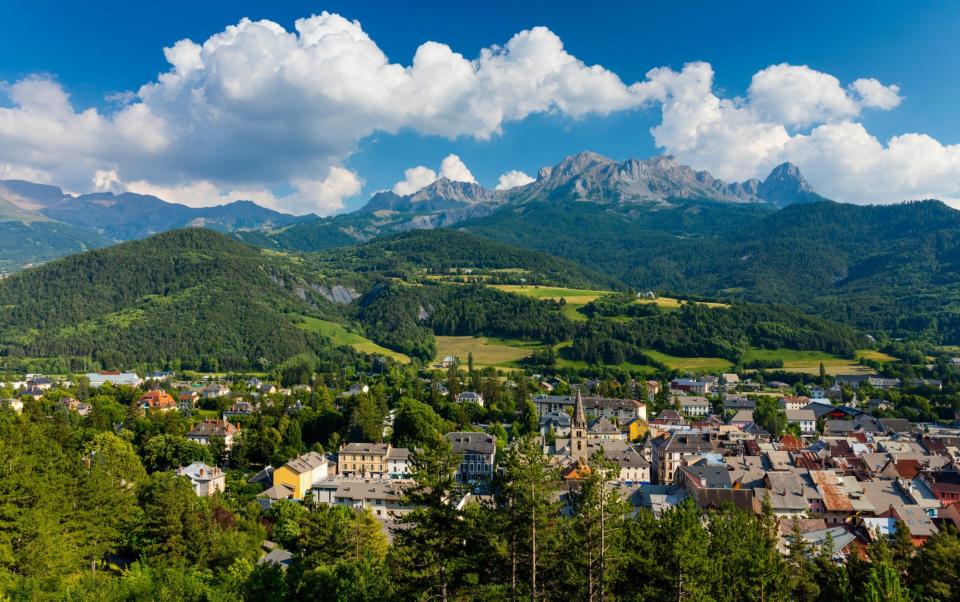
6. Minerve, Hérault, Occitanie
Population: 101
This astonishing spot grows directly out of a rocky promontory almost entirely encircled by gorges meeting in a vortex of vertigo. Apart from houses which teeter on the edge – mothers must have palpitations – slaughter is the village’s key claim to fame. The 1210 papal crusade against Cathars bade village heretics to renounce Catharism or die. Three gave in; 140 walked out of the town gate directly to the stake. It could have happened last week, for little has changed since. The light and heat of centuries pours out of the huge sky onto dense scrub, rock and patches of vineyard – and the village crams in upon itself to shelter. Stroll the streets and you might just be strolling the 13th-century. Well, not really. There’ll likely be a bloke in a tracksuit. But it’s as close as you’ll get.
Where to stay: Hotel Relais Chantovent (relaischantovent-minerve.fr) has double rooms from £52.
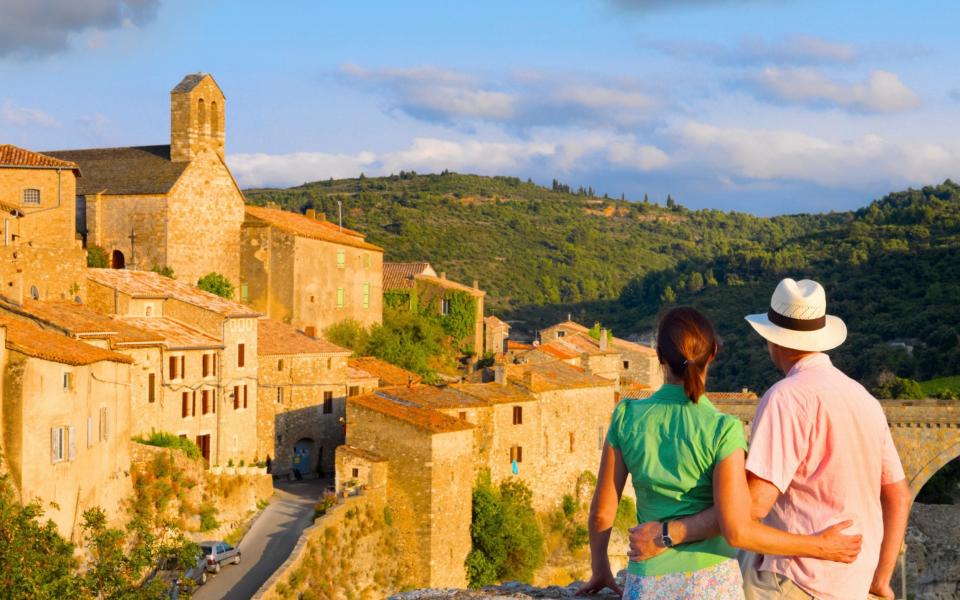
5. Kaysersberg, Alsace
Population: 2,528
Alsace gets a kicking whenever Latin and Germanic worlds come to blows. Locals have thus taken refuge in epic domesticity rooted in hard work, fraternity and unflagging festivity. The result, notably along the wine route, is a succession of half-timbered villages overcome with flowers and joie-de-vivre, all the while wearing Sunday best. Most seductive is Kaysersberg, its wonky cobbled streets winding blithely below vine-covered slopes of the incipient Vosges mountains. Up top is forest and what’s left of the imperial château, down below the birthplace of Albert Schweitzer (the Schweitzer Centre museum reopens after refurbishment on August 2, 2023.) It’s all so tenaciously preserved that you want to wind it up and see how it works, to accordion accompaniment.
Where to stay: Le Chambard (lechambard.fr) has double rooms from £259. Here, Oliver Nasti’s is one of Alsace’s finest tables.

4. Montreuil, Pas de Calais
Population: 1,900
Hill-topping Montreuil is better than we deserve, barely 60 minutes from the Channel. Beset by ramparts and equipped with a powerful 16th-century citadel, it had a starring role in Hugo’s Les Misérables. It’s also a repository of British military memories: in 1916, Field Marshal Haig established GHQ here. An equestrian statue of the fellow recalls the episode (you can puff out the chest further at Agincourt; it’s just half-an-hour east). These days, Montreuil is a tight delight of unexpected squares, gardens and cobbled streets; the whole is punctuated by so many bistros and restaurants that the village reckons itself La Destination Gourmande. You’ll get the idea at the Saturday market on Place General-de-Gaulle. To get you started: “un Welsh” round here is a local version of Welsh rarebit. Hope that helps.
Where to stay: Château de Montreuil (chateaudemontreuil.com) has double rooms from £120, plus a terrific restaurant.
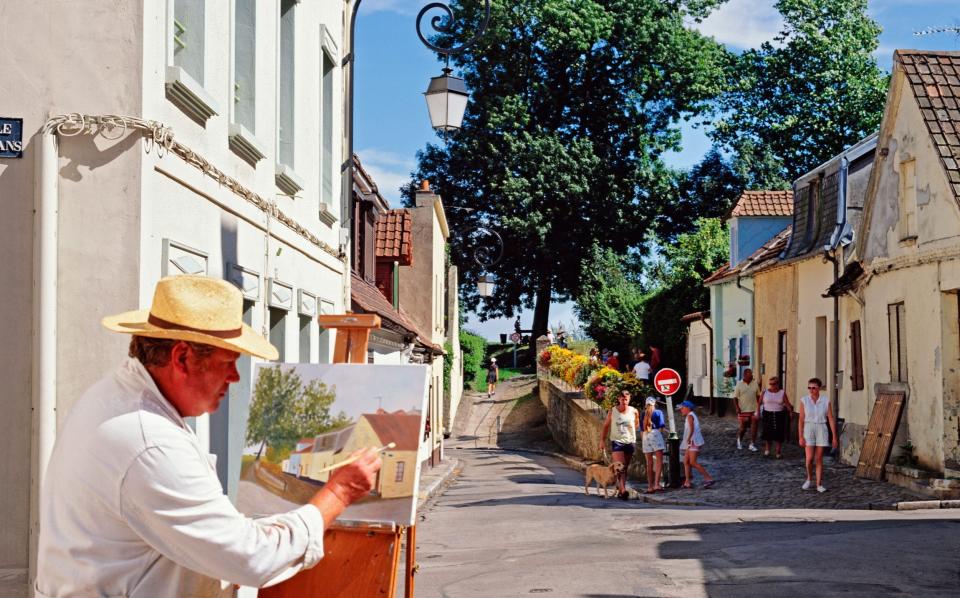
3. Angles-sur-l’Anglin, Vienne, Nouvelle Aquitaine
Population: 327
On its rocky promontory, Angles is so startlingly pretty that it brings me up short. From above the Anglin river – just before this joins the Gartempe valley east of Poitiers – the village unravels sharply down in a jumble of stone, horticulture and thigh-stiffening walkways. It requires no improvement. What it needs, it already has: a castle crumbled to perfection, a reproduction of the world’s longest Magdalenian sculpted frieze (20 metres of wild animals and naked women: sculptors’ interests haven’t changed much in 15,000 years; the real thing is nearby, too fragile for public gaze) and a sort of sunlit self-assurance. In this, one of the loveliest slices of unknown France, nearby villages have treasures of their own: unequalled Romanesque frescoes at St Savin, five châteaux in Chauvigny. But Angles has the serenity.
Where to stay: Relais du Lyon d’Or (lyondor.com) has double rooms from £91.
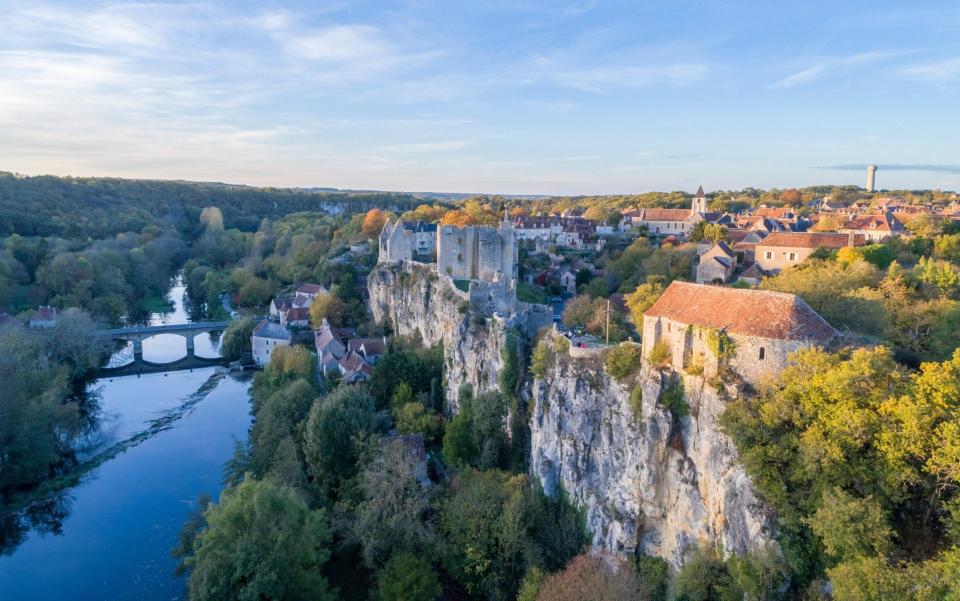
2. Le Pont de Montvert, Cévennes, Occitanie
Population: 291
RL Stevenson passed through Le Pont de Montvert during his Travels With A Donkey In The Cévennes. Let’s forget that. The book is like being cornered by a hiking bore. More interesting is that this close-packed village – it stretches along the infant Tarn river in the lee of Mont Lozère – was a hotspot of the 18th-century religious wars pitting Camisard Protestant guerrillas against the Catholic royal authorities. In the surrounding hillscape there’s no thicket, dell, slope, cave or rock that wasn’t roared over by the faithful keen to tear the other faithful apart. These days, there’s a nestling calm, notably right now as the stone village adopts summer wear and sends walkers off in all directions. But the tough sub-plot lends resonance to the roaming.
Where to stay: L’Auberge de la Lozère (auberge-des-cevennes.com) has double rooms from £59.

1. St Jean Pied de Port, Basque country
Population: 1,487
In the lee of the Pyrenees, St Jean (or Donibane Garazi, according to Basques), the pint-sized capital of inland Basque country, gathers in red-face, beret-wearing folk down from surrounding mountains for Monday markets, pelota matches and late-night bar-room singing about the wonders of being Basque. Modesty gets a look in, but not often. Walled and self-contained, with narrow paved streets rising to seek the citadel up top, and a fine old bridge spanning the river below, St Jean is as sturdily pretty as Basques have been making it for centuries; it’s welcoming, too. Pilgrims pause here, girding their loins for the subsequent 17-mile hike up the Pyrenees, en route to Santiago-de-Compostela. This makes everyone else feel guilty. Get over it with a glass of Irouléguy red at the Hôtel les Pyrénées.
Where to stay: Hotel les Pyrénées (hotel-les-pyrenees.com) has double rooms from £99.
